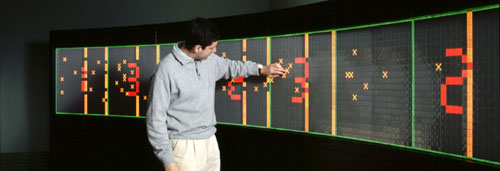
Biological inspiration in the design of computing machines finds its source in essentially three biological models: phylogenesis, the history of the evolution of the species, ontogenesis, the development of an individual as directed by his genetic code, and epigenesis, the development of an individual through learning processes (nervous system, immune system) influenced both by their genetic code (the innate) and by the environment (the acquired).
In the Logic Systems Laboratory (LSL), we have investigated, separately or together, all of these models, with a particular emphasis on the ontogenetic model, through the Embryonics (embryonic electronics) project, which draws inspiration from the development of multicellular individuals to obtain in digital hardware some of the features of biological organisms, and notably growth and fault tolerance.
Our activities have attracted a flattering amount of interest in the most varied and sometimes unexpected milieus. Among the most unexpected was undoubtedly Mrs. Jacqueline Reuge, who decided to fund the construction of a machine to display the principles of Embryonics to the public within a museum built to honor the memory of her late husband. Her generous support has allowed us to maintain our tradition of always verifying in hardware the concepts developed for our project.
This serendipitous event allowed us to construct a machine that would otherwise have remained a dream. We named this machine BioWall, because of its biological inspiration on one side, and because of its size on the other. In fact, the main goal of the machine being as a platform to demonstrate the features of our Embryonics systems to the public through a visual and tactile interaction, the final implementation of the BioWall weighs in at an impressive 5.3m x 0.6m x 0.5m = 3.68m3 (130 cubic feet).
A separate site, containing numerous photos and movies, is dedicated to the BioWall. Within this site, we shall simply mention that the BioWall remain an invaluable tool for prototyping cellular systems and that we make extensive use of its capabilities in the development of novel systems and algorithms.

More recently, a new research axis has spawned a small three-dimensional version of the machine, called BioCube. The BioCube is a platform used to verify the extensibility in the third dimension of some of the algorithms developed within the project, most notably where self-replication is concerned. One of the most intriguing promises of molecular-scale electronics of the next generation is in fact the possibility of adding an extra dimension to the design of electronic circuits, an extension that adds considerable computing power but that carries with it some non-negligible design challenges.